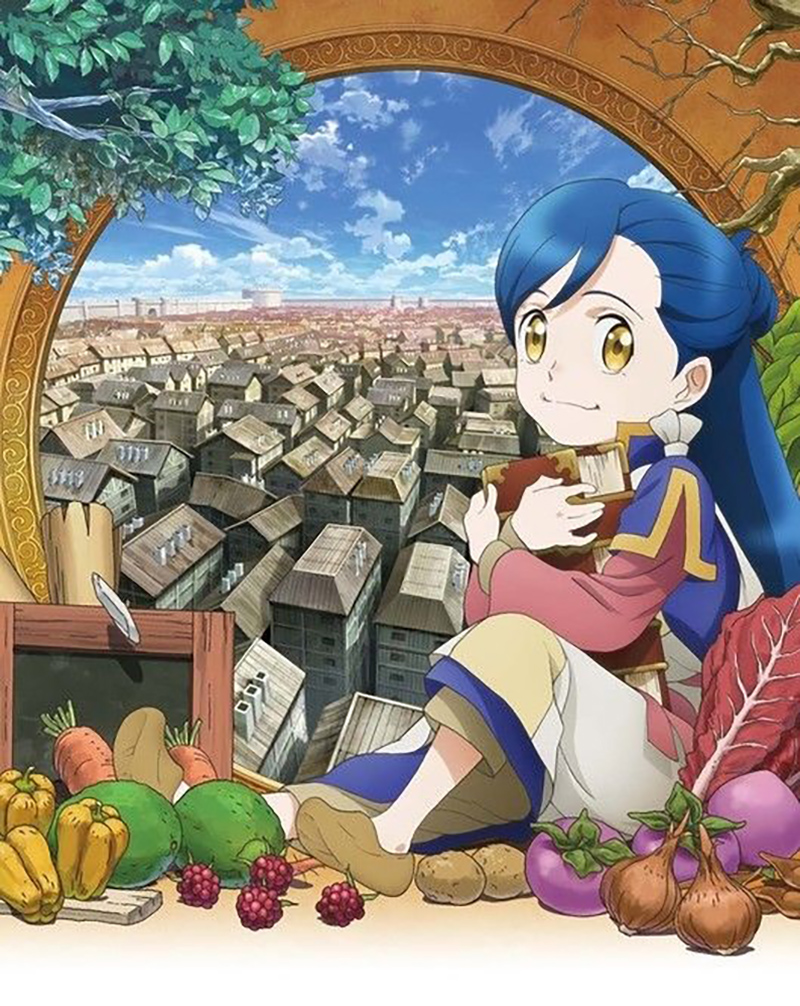The power fantasy that arts and crafters deserve
What if you went back in time with all the 21st-century knowledge and skills you had right this moment? Ascendance of a Bookworm asks and answers this question with a gentle and burning passion. This anime takes a modern Japanese woman with a love of reading, arts, crafts, and shrewd business practices and plops her in the middle of a fantastical version of medieval Europe.
But there’s a genre problem happening in anime right now. Isekai, often known in English as “Trapped in Another World,” started out with good intentions. Do you remember Digimon and Inuyasha? Our protagonists stumble from the real world into a parallel world in need of saving. It’s escapism at its finest; what kid wouldn’t want to be summoned into a place where magic is real and you can play the hero? But season after season the isekai genre adds to its body count. There were at least 16 isekai titles released in the year 2019 alone.
Harems of boring arm-candy women, lazy world building, and done-to-death tropes are strangling the genre. The problem is that for every one good isekai, studios greenlight three more half-baked shows to try and profit off that success. It was looking pretty dire last year… until Oct. 3 when an aspiring librarian was tragically crushed to death by a bookshelf.
But don’t worry! Our heroine was promptly reincarnated into the body of a sickly little girl named Myne. Bed ridden, impoverished, and five years old — this is the fresh air that isekai needed.
Bookworm’s world is bright — neon bright even. The main set pieces in season one are downtown (modeled after medieval European villages), the forest, and Myne’s home. From a mechanical standpoint the lines are clean and the colours are flat. The animation is stilted, and the camera is static. In fact, other than the wild colour palette, Bookworm is animated like a live-action TV show: the focus is on the characters’ expressions, body language, and dialogue. Some might see the apparent absence of sakuga (intricately hand-animated segments of an anime) as a lack of budget or quality. This couldn’t be further from reality. The love in Bookworm isn’t in the animation, it’s in the characters.
The cast of characters are the peasants that Myne is closest to physically. Because of her age and illness, her interactions are limited to family and neighbours. The isekai genre is littered with one-episode characters with eye-catching designs and easily identifiable quirks that make them memorable, because by next episode they’re gone forever. Since Bookworm limits itself to this small and consistent cast of characters, they’re each given room to breathe. Myne’s new parents aren’t just cardboard stand-ins that act as two-dimensional hurdles for our protagonist to surmount — they’re fully realized people who love their daughter. One of the most enrapturing facets of season one is watching Myne warm up to them. It’s bittersweet because Myne already had parents who loved her in her former life, whom she’s been ripped from by forces she couldn’t control.
Myne doesn’t have much agency in the first few episodes, but that’s okay. Often isekai start episode one with alarms blaring and tires screeching. While a full-speed ahead approach might capture more easily distracted viewers, Ascendance of a Bookworm naturally builds up to a respectable pace. When Myne is succeeding you really feel like she’s accomplished something, because you were there the whole time she was struggling. Her wins feel earned, and her rewards are deserved unlike the shiny prizes rained down in the lap of less earnest protagonists of other isekais.
That’s what I’m loving so much about Ascendance of a Bookworm.
TV Tropes identifies an isekai trope named “New Life In Another World Bonus” where the protagonist is given an overpowered skill or weapon or a literal cheat code to help in their journey. What does Ascendance of a Bookworm give our newly reincarnated protagonist? Nothing. Unless you count crippling poverty and a debilitating and probably terminal disease a “bonus.” Myne’s superpowers aren’t cheaply doled out by some fantasy deity or an amnesic AI program; Myne’s superpowers are crochet and a love of books. Basket weaving and hair accessory making are also some of her skills that she uses to empower her family and friends, to raise their standard of living. In a world where nobles have all the fancy things, a small girl with a deep knowledge of arts and crafts can go a long way.
I watch every week at the edge of my seat, white-knuckled and transfixed, as this small girl negotiates with merchants over who gets sole manufacturing and distribution rights to her new invention, “shampoo.”
Ascendance of a Bookworm, season one, is rated 8/10 on My Anime List for a reason. It’s endearing, intense, and all-around rewarding to watch. Season two is airing currently, and I couldn’t in a million articles completely explain how much I love this anime.


